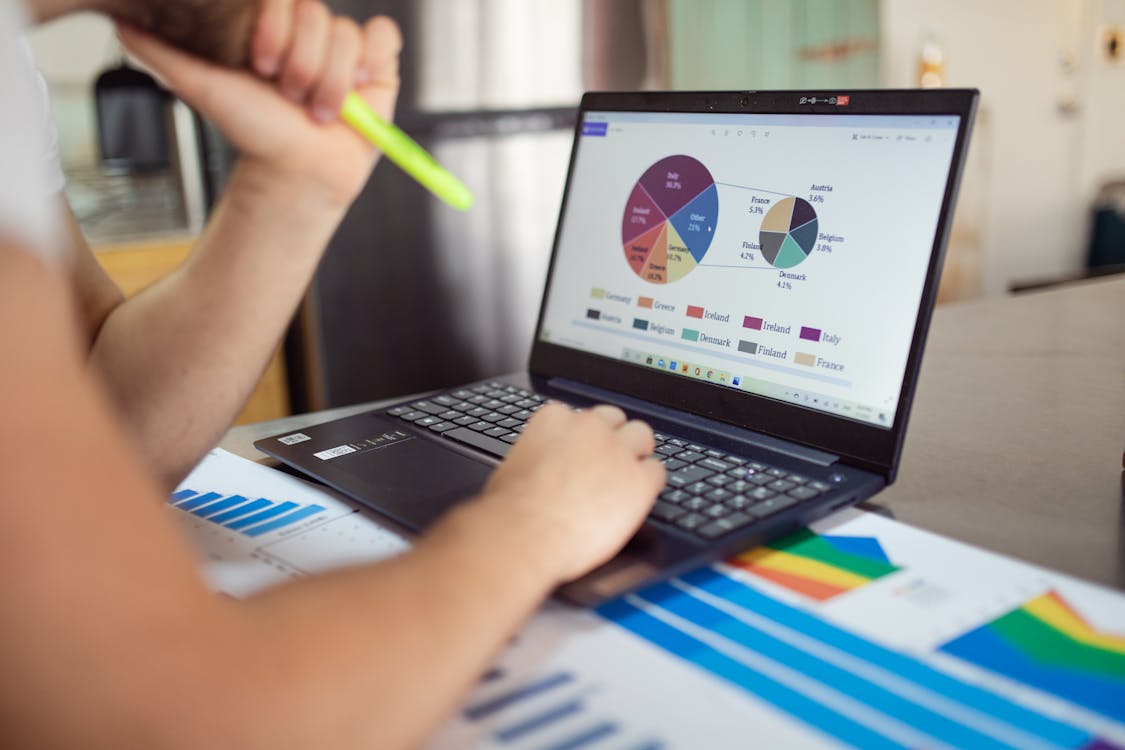Data Visualization
Data Visualization: Turning Data into Insightful Visuals
In today’s data-driven world, making sense of vast amounts of data is essential for businesses, researchers, and decision-makers. Data visualization is a powerful tool that transforms complex datasets into clear and actionable visuals, making it easier to understand trends, patterns, and outliers. In this blog post, we’ll explore the importance of data visualization, and the popular tools used—Power BI, Excel, and Python.
What is Data Visualization?
Data visualization is the graphical representation of information and data. By using visual elements like charts, graphs, and maps, data visualization tools provide an accessible way to see and understand trends, outliers, and patterns in data. It’s a key step in data analysis as it enables decision-makers to see analytics presented visually, grasp difficult concepts, or identify new patterns.
Why is Data Visualization Important?
- Simplifies Complex Data: Raw data can be overwhelming. Visualization simplifies data, making it easier to interpret and understand.
- Improves Decision-Making: Visuals help in quick decision-making by presenting data in a way that is easy to digest.
- Identifies Trends and Patterns: Visualization reveals trends and patterns that might not be apparent in raw data.
- Engages the Audience: Visual data is more engaging and easier to share, leading to better communication of findings.
Popular Data Visualization Tools
There are several tools available for data visualization, each with its unique features and capabilities. Let’s explore three popular tools: Power BI, Excel, and Python.
1. Power BI
Power BI is a business analytics tool by Microsoft that provides interactive visualizations and business intelligence capabilities. It is user-friendly and allows users to create reports and dashboards with a few clicks.
Key Features:
- Drag-and-Drop Interface: Easily create visuals by dragging and dropping data fields.
- Integration with Various Data Sources: Connects with multiple data sources like Excel, SQL Server, and cloud services.
- Real-Time Data: Supports real-time data visualization, which is crucial for live data monitoring.
- Custom Visuals: Offers a marketplace for custom visuals, allowing more flexibility and creativity.
- Sharing and Collaboration: Share dashboards with colleagues or embed them in apps or websites.
When to Use Power BI? Power BI is ideal for business users who need to create interactive reports and dashboards with minimal coding. It’s particularly useful for real-time analytics and business intelligence.
2. Microsoft Excel
Excel is one of the most widely used tools for data analysis and visualization. It’s accessible, user-friendly, and offers a variety of charting options.
Key Features:
- Wide Range of Chart Types: From bar charts to pivot charts, Excel offers a broad range of charting options.
- Data Manipulation: Excel’s powerful functions and formulas allow users to manipulate data before visualizing it.
- Customizability: Extensive customization options for charts, including colors, labels, and formatting.
- Conditional Formatting: Visualize data within cells using color scales, data bars, and icon sets.
- Accessibility: Available on almost every computer, making it an easy choice for quick and simple visualizations.
When to Use Excel? Excel is best suited for users who need quick, straightforward visualizations or those who are working with smaller datasets. It’s also a go-to tool for initial data exploration and for creating simple reports.
3. Python
Python is a programming language known for its simplicity and powerful libraries for data analysis and visualization. Libraries like Matplotlib, Seaborn, and Plotly make Python a robust tool for creating detailed and customized visualizations.
Key Features:
- Matplotlib: A fundamental plotting library in Python, perfect for creating basic visualizations like line charts, histograms, and scatter plots.
- Seaborn: Built on top of Matplotlib, Seaborn provides a higher-level interface for drawing attractive and informative statistical graphics.
- Plotly: An interactive graphing library that enables the creation of complex, interactive plots and dashboards.
- Customization: Full control over every aspect of your visualizations, from colors and labels to interactive elements.
- Integration: Integrates easily with data analysis libraries like Pandas, making it a powerful tool for end-to-end data analysis and visualization.
When to Use Python? Python is ideal for data scientists and analysts who need advanced, customizable visualizations. It’s also great for automating repetitive tasks and creating interactive visualizations for web applications.
Choosing the Right Tool
Choosing the right visualization tool depends on the nature of your project, the complexity of your data, and your audience. Here’s a quick guide:
- Use Power BI if you need to create interactive dashboards and reports with real-time data for business users.
- Use Excel for quick, simple visualizations or when working with smaller datasets. It’s perfect for initial data exploration.
- Use Python when you need highly customized visualizations or when working on complex data analysis projects that require automation.
Conclusion
Data visualization is an essential skill in today’s data-driven world. Whether you’re a business analyst, data scientist, or researcher, being able to transform raw data into insightful visuals is invaluable. By understanding and utilizing tools like Power BI, Excel, and Python, you can create impactful visualizations that not only tell a story but also drive informed decision-making.
